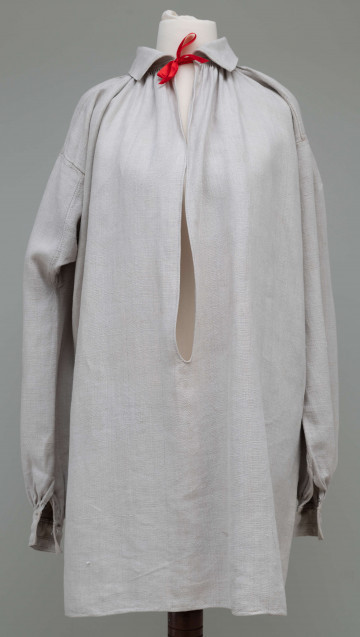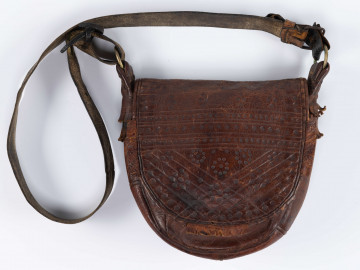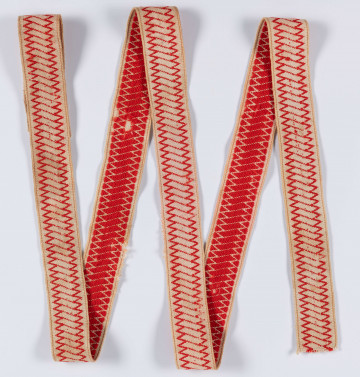
Men’s shirt
1850 — 1900
National Museum in Lublin
Part of the collection: Folk craft of the Lublin Region (19th/20th c.)
From the first half of the 20th century, men's trousers were sewn from thick, durable hemp canvas made at a weaving workshop. They are sewn by hand from two sheets of fabric measuring 82 cm in length and 30 cm in leg width. At the top, the fabric is folded and sewn through, and a cord is drawn through the resulting tunnel to hold the trousers at the waist. At the bottom of each leg, there is a small slit on the inside, which makes it easier to insert the relatively narrow legs. The breeches – as the peasants called this item of clothing – were worn every day to work. In winter, they were worn as underwear. Even two or three pairs were worn to protect against the cold. Trousers of this type – working trousers – were sewn by housewives for everyday use, while those worn for festive dress, usually one pair, were ordered from tailors and made of cloth. They were worn for Sunday mass or other important occasions.
It was a garment reserved for men only. Boys were allowed to wear breeches only at the age of twelve; before that, they, like girls, wore long shirts, almost to their ankles. Festive trousers were given to bachelors when they were supposed to be courting a future wife. Trousers were not accepted in women's fashion until the 1950s. Women in our country first appeared on the streets of the capital in a trouser dress designed by Poiret in 1911, which was received very critically.
Author / creator
Dimensions
cały obiekt: width: 82 cm
Object type
pants
Technique
sewing
Material
flax
Creation time / dating
Creation / finding place
Owner
The National Museum in Lublin
Identification number
Location / status

1850 — 1900
National Museum in Lublin

1801 — 1900
National Museum in Lublin

1890 — 1910
National Museum in Lublin
DISCOVER this TOPIC
National Museum in Lublin
DISCOVER this PATH
Educational path